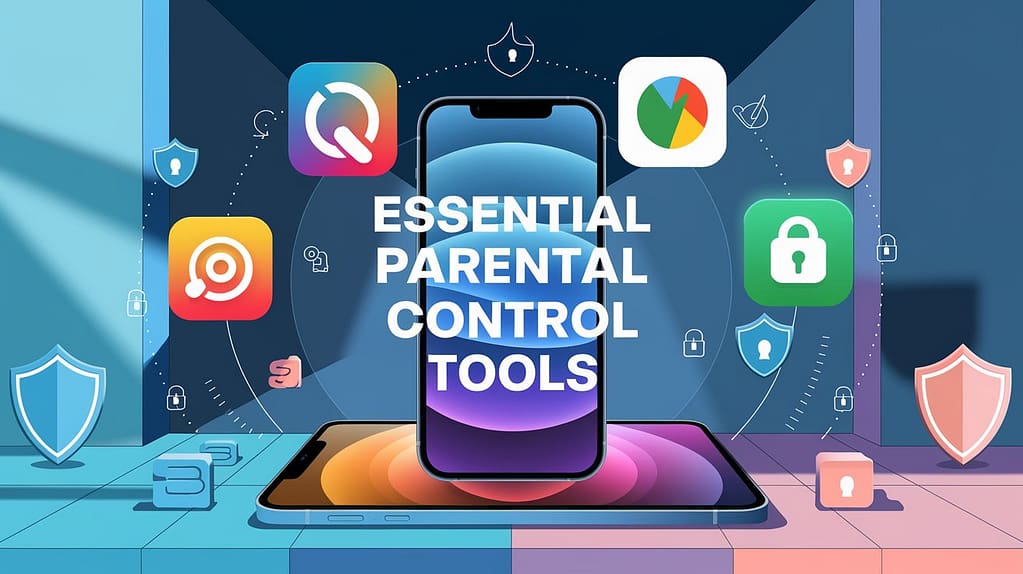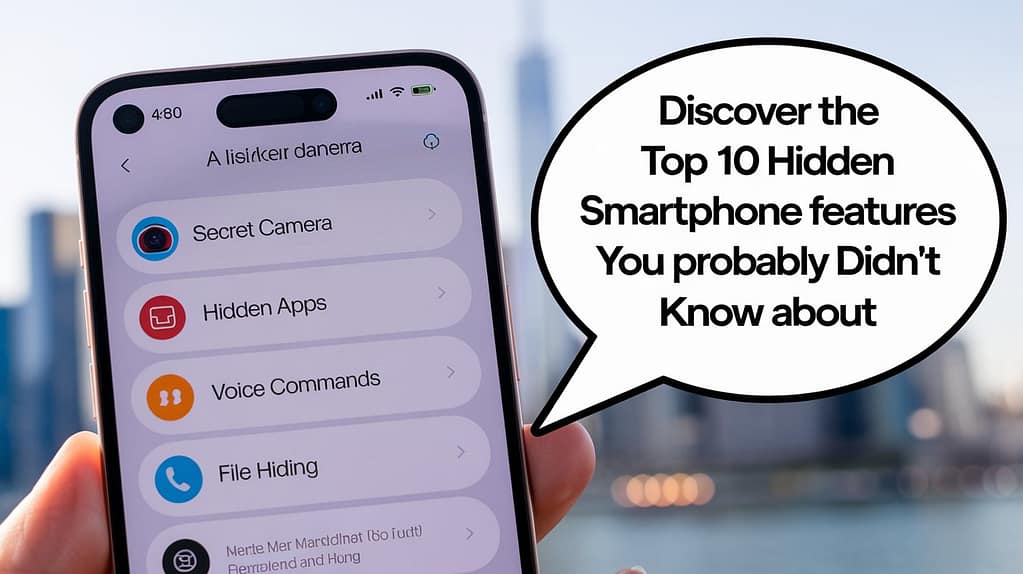Introduction
Smartphones have transformed into powerful, multi-purpose devices capable of replacing many standalone gadgets, including GPS systems. Whether you’re traveling cross-country, navigating a new city, or exploring off-the-beaten-path trails, using your smartphone as a GPS can make a big difference. However, to ensure accuracy and safety, it’s essential to know a few key tips to get the most out of your phone’s navigation capabilities.

Below, you’ll find a comprehensive guide with tips for optimizing GPS accuracy, essential safety precautions, and more, so you can confidently use your smartphone as a reliable GPS tool.
Table of Contents
1. Understanding Smartphone GPS Technology
How Smartphone GPS Works
Your smartphone GPS (Global Positioning System) technology works by receiving signals from a network of satellites orbiting the Earth. When you open a GPS-enabled app on your phone, it uses the signals from at least four satellites to determine your exact location within a few meters. Modern smartphones combine this GPS data with information from Wi-Fi, cell towers, and sensors like gyroscopes and accelerometers to increase location accuracy.
Comparing Smartphone GPS vs. Dedicated GPS Devices
While dedicated GPS devices focus solely on navigation, smartphones integrate GPS functionality with various apps, from maps to fitness trackers. However, smartphones can experience performance challenges due to battery constraints, signal interference, and multi-tasking with other apps. Understanding these differences can help you manage your expectations and optimize performance when using your phone as a GPS.
2. Optimizing GPS Accuracy on Your Smartphone
Ensuring GPS Signal Quality
Maintaining a strong GPS signal is crucial for navigation accuracy. Here are some tips for improving your phone’s GPS signal:
- Avoid Physical Obstructions: GPS signals work best when your phone has a clear line of sight to the sky. Avoiding tall buildings, tunnels, or dense forests can improve signal strength.
- Turn on High Accuracy Mode: Most smartphones have a “High Accuracy” location mode. Activate this setting to use Wi-Fi, mobile networks, and GPS for optimal accuracy.
- Update Your GPS App Regularly: Updating your maps and GPS apps ensures you’re getting the latest map data and bug fixes that can improve performance.
Keeping Your Maps Updated


Outdated maps can lead to inaccurate directions and missing landmarks. Regularly updating your map apps, such as Google Maps or Apple Maps, can help you stay on track with accurate information on roads, landmarks, and other changes.
Importance of Clear Line of Sight
GPS accuracy improves significantly when your phone has an unobstructed view of the sky. For drivers, placing your phone on the dashboard or windshield mount instead of keeping it on the passenger seat will help maintain this clear line of sight.
Tips for Using Offline Maps
When traveling through remote areas with poor signal coverage, offline maps can be a lifesaver. Download the map of your route beforehand by going to Google Maps > Offline Maps > Select Your Map. This way, you’ll have a backup even if you lose the network.
3. Battery Management for Extended GPS Use
Tips for Battery Conservation
GPS usage can drain your phone’s battery quickly. To conserve battery life:
- Reduce Screen Brightness: Lowering the screen brightness can significantly reduce battery usage.
- Close Background Apps: Having multiple apps open can consume unnecessary power. Close any apps you’re not actively using.
- Use Airplane Mode (Offline Maps): If you’re using offline maps, switching to airplane mode prevents your phone from searching for network signals, saving battery.
Using Power Banks and Battery Packs
Investing in a power bank or portable battery pack is a smart choice for long trips. You can charge your phone on the go, ensuring that your GPS remains active throughout the journey. Look for power banks with high capacity (10,000mAh or more) for extended use.
4. Safety Tips for Using GPS on Your Smartphone
Avoiding Distracted Driving with GPS
Operating a GPS while driving can be distracting and dangerous. To stay safe:
- Set Your Route Before You Start Driving: Input your destination and start the route guidance before moving.
- Use Voice Navigation: Voice-guided navigation helps you keep your eyes on the road, receiving spoken directions instead of constantly looking at your screen.
- Mount Your Phone Securely: Choose a car mount that places your phone within easy view but away from the steering wheel for safe accessibility.
Hands-Free Mount Options
Hands-free mounts are essential for safe driving. There are various mount types available, such as dashboard mounts, air vent mounts, and windshield mounts. Experiment to find the mount that best suits your car’s layout and your viewing comfort.
Voice Navigation Benefits
Voice navigation is especially helpful when driving in unfamiliar areas. By enabling this feature, you won’t have to look at the screen frequently, allowing you to stay more focused on the road.
5. Best GPS Apps for Accuracy and Safety
Google Maps
Google Maps is one of the most reliable and widely-used GPS apps, providing accurate and up-to-date maps worldwide. The app offers traffic updates, offline maps, and various routing options to help you navigate efficiently.
Waze
Waze is a crowd-sourced navigation app that provides real-time updates from other drivers. It alerts users to road hazards, traffic delays, and speed traps, making it ideal for daily commuters or road trip enthusiasts.
AllTrails and Other Specialty GPS Apps
For outdoor enthusiasts, AllTrails offers GPS capabilities specifically designed for hiking, biking, and off-road trails. It provides detailed topographic maps and user-generated trail reviews, making it ideal for adventurers who love exploring nature.
6. Troubleshooting Common GPS Issues on Smartphones
GPS Not Working or Losing Signal
If your GPS isn’t functioning correctly, try these steps:
- Restart Your Phone: A simple restart can resolve many issues, including GPS connectivity.
- Toggle Airplane Mode On and Off: This can reset your phone’s network and GPS connection.
- Update Your Software: Outdated software may affect GPS performance. Make sure your phone’s operating system is up-to-date.
Calibrating Your Smartphone’s Compass
Calibrating your phone’s compass improves its ability to detect direction. Open Google Maps and make a figure-eight motion with your phone until the compass accuracy improves.
Managing App Permissions for Better GPS Performance
Check your location permissions in your phone’s settings to ensure that your GPS app has the necessary permissions enabled. Set the app’s location access to “While Using the App” for better battery management without compromising accuracy.
7. Conclusion
Using your smartphone as a GPS is convenient and cost-effective, but to make the most of it, you need to ensure that your settings, apps, and usage habits align with best practices. By following these tips for improving accuracy and safety, you can confidently use your smartphone for navigation, whether on city streets or rural trails. Remember, keeping your maps updated, managing your battery, and practicing hands-free safety are key to a smooth and safe journey.
FAQs
1. Can I use my smartphone GPS without an internet connection?
Yes, most GPS apps, like Google Maps, allow you to download maps for offline use.
2. What should I do if my GPS is inaccurate?
Check your phone’s location settings, calibrate the compass, and ensure a clear line of sight to the sky.
3. Is smartphone GPS as accurate as a dedicated GPS device?
Generally, yes, but dedicated GPS devices can perform better in remote or obstructed areas due to specialized hardware.
4. How can I conserve battery when using GPS for long trips?
Lower the screen brightness, use offline maps, and bring a power bank to keep your phone charge
5. Are there GPS apps specific to hiking and outdoor adventures?
Yes, AllTrails and Gaia GPS are popular for hiking, offering trail maps and outdoor-specific features.

